Ecuador’s Only Travel Guide You Need For A Great Trip in 11 Easy Steps
- Destinations Americas
Cruisit Team
- August 12, 2022
- 0
- 4860
- 81 minutes read
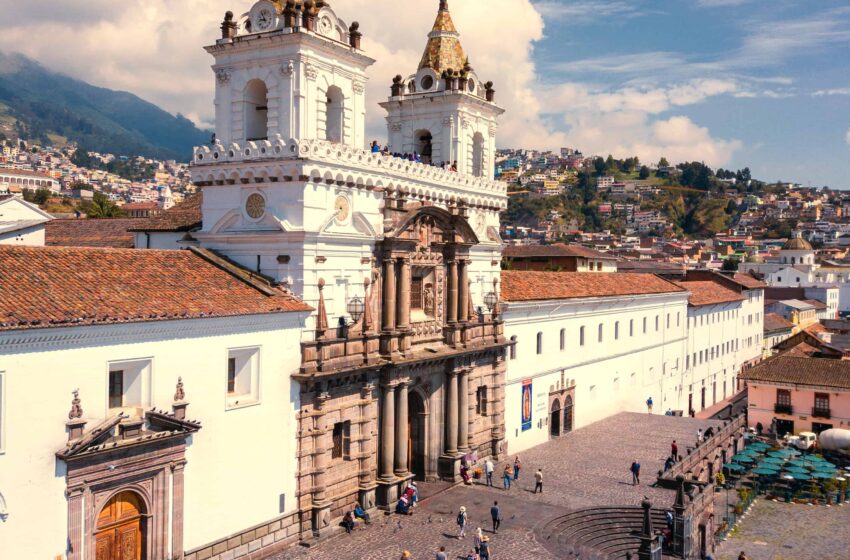
Ecuador’s Background
Discoveries in Ecuador of different artifacts puts a date for how far back people lived in the country, and it is around 3000 BC to 2500 BC. These artifacts, including fascinating pottery seems to have impacted multiple cultures from Mexico to Peru. The indigenous Ecuadorian’s weren’t only talented with pottery and gold, copper, and silver smith work but also farmed potatoes, beans, corn, and squash, they raised dogs and guinea pigs for meat. For a long time, people lived in clans, some formed great tribes, little allied with each other to form powerful confederations, like the one in Quito, but then in the 1400s, the Inca arrived. The Tawantinsuyu was a formidable force that existing fragmented clans in Ecuador can’t really resist an empire like the Inca. Topa Inca Yupanqui began the conquest and it was continued by his successors Huayan Capec, and later by Huascar, in Cuzco, and Atahuallpa. Inca authority was loathed by some and warmly embraced by others in Ecuador.
Territorial and power struggles along with a civil war was about the same time a Spanish expedition emerged when they first glimpsed Ecuador in 1526. Shortly after they found it, the Spanish invasion in 1534 spread like wild fire, and some Ecuadorians embraced them as liberators from the Inca, and some resisted them fiercely. But, the resistance to the Spanish was not strong enough the stop a more sophisticated empire from taking control of Ecuador. The Incas were crushed, and the Spaniards constructed Quito on the ruins of a defeated Inca city in 1534, then Guayaquil in 1535, and Cuenca in 1557. Like many other conquerers, the illnesses like smallpox that they brought with them killed the natives more than the troops did, the so called liberators, wiped out the inhabitants in Ecuador. During the colonial period, slaves were brought from Africa to work the plantations like sugar. This ethnicity mix makes Ecuador today home people with Spanish, African, and Native South American ancestors. Ecuador was a viceroyalty of Peru in the 16th and 17th century, then was included in the viceroyalty of Nueva Granada in the early 18th century.
The first taste of independence from the Spanish authority Ecuador ever felt was in 1822, after many appraisals in the 18th century and early 19th century, the people won the battle of Pichincha. This was the beginning of the formation of Gran Colombia with Venezuela and Colombia. Then, Ecuador was at war with Peru over the border from 1828 to 1829, and later was separated from Gran Colombia in 1830. Those events were followed by the first president of Ecuador, Juan Jose Flores who ruled from 1831 to 1835 then again from 1839 to 1845. By 1851, Ecuador abolished slavery. Shortly after, with rising tensions, Ecuador was divided, but then reunited by Gabriel Garcia, who then became president in 1861, but later murdered in 1875 and followed by a dictator, General Ignacio.
Ecuador’s economy thrived throughout the late 19th and early 20th centuries. Unrest and coups were part of almost every country in the world, and so was the case for Ecuador. So was the case when Ecuador suffered from the impact of the 1930s economic downturn which brought political instability and a rapid succession of presidents. But shortly after, in 1941, Peru attacked and seized Ecuador’s south, they were able to get a part of, but then later an earthquake devastated the city of Guayaquil in 1942. Thankfully, an economical boom restored wealth in the late 1940s brought by rapid demand in Bananas that were shipped from Ecuador. Then again, 10 years later, the demand declined, and political instability reemerged. From 1963 to 1966, an era of military control ravaged the country. It was followed by a civil administration, but then the military regained power in 1972, followed by a coup in 1976 by a group of officers, and it wasn’t until 1979 that Ecuador regained democracy.
In the midst of this military era, oil was found in 1967, and many other exports likes shrimp, bananas, chocolate, coffee, and sugar were exported which made Ecuador’s economy thrive throughout the 1970s. Then oil prices decreased in the 1980s taking the country into a recession, with inflation, and unemployment. These troubling times persisted throughout the 1990s. the early 2000s saw a wave of changes and recovery brought after the elected president Jamil Mahuad was deposed and Gustavo Noboa, the vice president, took his post. Meanwhile, an unofficial border war was taking place between Ecuador and Peru from 1995 to 1998, ending with a peace treaty. Poverty declined in the early 21st century, heavily reliant on oil, but also tourism rapidly developing in Ecuador expanded the economy.
Beautiful Ecuador is located in the northern section of South America, with a Pacific Ocean coastline between Colombia and Peru. There are four distinct regions in the nation. The Amazon Rainforest in the east, the Andean Highlands in the center, and the Coastal Lowlands along the Pacific Ocean are among them. Finally, the Galapagos Islands are around 1,000 kilometers from the South American shore. Ecuador contains regions that experience nearly every climate. The weather is tropical at the coast and colder and drier inland at higher elevations. The Amazon Rainforest is tropical as well. Although the climate varies greatly between places, once in a location, the weather is rather similar throughout the year.
Ecuador is arguably best known for the Galapagos Islands. The famed Galápagos Islands, with their volcanic, surreal vistas, attract animal enthusiasts. On land and water, you may watch giant sluggish tortoises, darting marine iguanas (the world’s only seagoing lizard), doe-eyed sea lions, dancing blue-footed boobies, and a slew of other rare species. The Amazon jungle provides a very distinct animal viewing experience. Explore the rivers and woodland pathways in search of monkeys, sloths, toucans, and river dolphins. Some lodges also have canopy towers with breathtaking views (and a better chance to see birdlife). Mindo’s cloud forest is a birder’s delight, with over 1600 avian species recorded in the nation. The Galapagos Islands are the country’s biggest draw, with most visitors flying from Quito to the islands to take advantage of the incredible wildlife-spotting possibilities.
“A secluded, untouched, and unfrequented gem in Asia. Timor Boasts some of the best reefs to dive in, mountain regions to climb, and so much history to learn about from a Asia’s newest country“
Aside from the Galapagos, there are many other places to visit in the country, including a number of UNESCO World Heritage Sites. Among these are Cotopaxi, the world’s highest active volcano, and the city of Cuenca. Many people also visit Quito, the capital city. It’s a wonderful place to visit, with one of the biggest and finest maintained historic centers in South America. It was also the first World Cultural Heritage Site, together with Krakow, in 1978. Quito and Cuenca’s ancient towns are dotted with picturesque plazas, 17th-century churches and monasteries, and wonderfully renovated houses. Wandering the cobblestone lanes surrounded by Spanish colonial buildings provides insight into the area’s tumultuous past. Beyond the cities, the Ecuadorian countryside reveals its astonishing diversity. There are Andean communities famous for their colorful textiles and enormous markets, Afro-Ecuadorian cities where days conclude with dinners of fresh seafood and unforgettable sunsets, and remote Amazon settlements where shamans still gather their ancestors’ traditional jungle remedies.
But Ecuador is much more than the Galapagos Islands or th capital, Quito. Backpacking or simply traveling around Ecuador is a breathtaking experience. The food is fantastic, there are numerous mountains, pristine beaches, and the people are among the kindest you will ever meet. A journey in the Andes will feel like stepping into a mystic world, with its patchwork of little settlements, bubbling brooks, rolling plains, and perhaps a condor swooping overhead. Although the view from the summit is breathtaking, you don’t have to climb a mountain to appreciate the Andes. These lush surroundings are ideal for mountain biking, horseback riding, or hiking from village to village, staying at small guesthouses along the route. Ecuador’s various landscapes offer equally enticing thrills, from surfing the Pacific coast’s tight breakers to white-water rafting rivers along the Oriente’s jungle-clad banks.
Exploring the Ecuadorian Amazon or climbing one of the country’s many volcanoes, including the world-famous Cotopaxi Mountain, will appeal to adventure seekers. The little nation packs a powerful punch, and this Ecuador travel guide will help you make the most of your visit! A spectacular assortment of delights is jammed into this petite country, including postcard worthy cities, waves smashing white-sand beaches, Kichwa communities, Amazonian jungle, and the magnificent Andes.
After a day of Ecuadorian activities, there are many enticing spots to unwind amid breathtaking landscape. Visit a historic hacienda in the highlands to rejuvenate, or enjoy Zen-like beauty in a cloud-forest retreat near Mindo. There are tranquil, timeless mountain communities like Vilcabamba and magnificent former gold-mining towns like Zaruma that provide an ideal counterpoint to the dizzying pace of contemporary life. And for a seaside retreat, you’ll have lots of alternatives, from little off-the-beaten-path communities like Ayampe and Olón to beautiful Galápagos towns with fantastic beaches and spectacular sunsets.
To enjoy Ecuador the most, you will want to stay on the move in order to see and do as much as you can of what Ecuador has to offer for tourists. In this Cruisit Ecuador travel guide, we give you a plan that falls halfway in the middle, with a good mix of leisure and discovery. Enter the country and fully experience and explore this South American dream destination. Ecuador’s trip plan that we provide below is best experienced in the country’s high season, but you can also enjoy the shoulder season too. Your Latin fantasies will come true, with warm days beside sapphire waters in the company of legend, and surrounded by lush forests and high-peaked mountains, not to mention thousands of wildlife species to discover.
Also, in our travel guide to Ecuador, we will provide you with all the information you will need to navigate the country at ease. Ecuador’s highlights, tips, transportation, top places and attractions, a handcrafted itinerary in Ecuador, and more will be provided for you as you read through. If you are excited enough by now, let us dig right in!
- Visit Baños for incredible volcanic excursions.
- In Baños, take a swing at the end of the world.
- Visit the Temple of the Sun at Ingapirca, Ecuador’s grandest Incan ruins.
- Witness the lovely Laguna Quilotoa with its azure waters.
- Check out the Otavalo Market.
- Visit the World Heritage Site of Cuenca.
- In Montañita, you can unwind.
- Visit Puerto Lopez to go whale watching.
- Visit or volunteer at an Amazon wildlife sanctuary such as Tiputini Biodiversity Station.
- Meet the indigenous peoples of Ibarra.
- Investigate the lava tunnels north of Puerto Ayora.
- Consider visiting the fascinating Galapagos Islands.
- While in Ecuador, many travelers choose to take a Spanish course. In Quito, there are several private Spanish academies. Although the quality varies, this is typically an excellent method to learn or improve your Spanish.
- Ecuador’s currency is the US dollar, and most places will not accept any other cash. In general, paper currency is used for transactions rather than credit cards. Larger amounts are rarely accepted, thus it is preferable to carry a variety of smaller ones to pay with. Most banks allow you to split bigger banknotes. Also, make sure your bills are new and undamaged, as older ones are frequently rejected.
- Ecuador is one of the most secure countries in South America. The crime rate is low, about half of what it is in parts of the United States. Cuenca and Laja in the province of Azuay are two of the safest places to visit.
- Ecuador maintains a tourism police branch to assist visitors. Install the travel safety app on your phone, and when you call for help, the police can locate you using your GPS (if necessary).
- Many individuals prefer to volunteer while in Ecuador to give back a bit. There are several organizations with which you may volunteer, but do your homework beforehand. You can work on anything from conservation initiatives to home construction or English teaching. There are several third-party organizations that may assist you in coordinating your options, or you can directly contact an NGO.
- Travelers can utilize Internet cafés, get a SIM, or have Wifi in their accommodation. So getting connected is not going to be a challenge.
- Even whether you’re traveling alone or as a solo female traveler, Ecuador is typically a secure area for tourists, particularly backpackers. The most prevalent sort of crime in Ecuador is petty theft (including bag snatching).
- Convenience shops rarely remain open beyond 10 p.m. Keep that in mind.
- You might be the only one wearing shorts in Ecuador, especially in Quito
- When in the Galapagos, know that there are no ATMs on Isabela Island, and credit cards are occasionally accepted, although they charge exorbitant fees.
Crime & Scams in the Ecuador
In Ecuador, crime is a common issue. Murder, assault, armed robbery, and swift kidnappings (in which thieves enter a cab or other vehicle and compel victims to withdraw money from ATMs) are all typical types of violent crime. However, Ecuador is a relatively safe destination for tourists. However, pickpockets, con artists, violent crime, and natural calamities do happen and can spoil an otherwise wonderful vacation. Armed robbery is a possibility all around Ecuador. Homicides, gunpoint robberies, and house invasions continue to be reported in Guayaquil and Quito. The majority of violent violence is gang-related, however tourists might become unintentionally involved. Armed robbers have also stopped cars and threatened passengers.
Be vigilant, particularly if you are in public places used by foreigners, near official buildings, crowded attractions, or on public transportation. Avoid poor areas of the city. Take care on city streets, especially after dark or if you are on your own. Don’t carry large amounts of money or wear valuable watches or jewelry. Avoid using your mobile phone in the street.
Healthcare in Ecuador While Traveling
Ecuador provides excellent, low-cost healthcare. Top-tier facilities and highly competent doctors earn Ecuador a high standing in the world’s healthcare rankings, and the country is regarded for having one of the world’s most efficient healthcare systems. A general practitioner appointment costs $20 to $40, whereas a specialist visit costs $40 to $100, making it incredibly reasonable for travelers to get checked.
Before every trip, make sure you are up to date on all routine vaccinations. Among the key recommended vaccines globally are chickenpox (Varicella), diphtheria-tetanus-pertussis (DTP), influenza (flu), measles-mumps-rubella (MMR), polio, hepatitis, typhoid, and shingles. If you will be in contact with wildlife, you may want to consider getting a rabies vaccination.
When visiting Ecuador, you are legally required to purchase travel medical insurance. It is always important to have comprehensive medical coverage when traveling because you never know what you could encounter while overseas. You should make sure you have adequate travel health insurance and accessible funds to cover the cost of any medical treatment, evacuation, and repatriation.
Only eat foods that are cooked and served hot, avoid food that has been sitting on a buffet, and eat raw fruits and vegetables only if you have washed them in clean water or peeled them.
Only drink beverages from factory-sealed containers, avoid ice because it may have been made from unclean water, and only drink pasteurized milk.
Make sure to wash your hands often with soap and water for at least 20 seconds, especially after using the bathroom and before eating. If soap and water aren’t available, use an alcohol-based hand sanitizer that contains at least 60% alcohol. Also, keep your hands away from your face and mouth.
Ecuador has two recognized seasons which are rainy and dry. However, because the elevations in Ecuador vary so greatly, it actually depends on where and when you visit the country. Mountain valleys have a mild climate all year, whereas coastal areas have a subtropical humid climate as well as the rainforests in the lowlands.
Shoulder Season
October and November are transitional months in Ecuador, particularly in the highlands. As the weather begins to shift toward winter, expect cooler temperatures in the highlands. May however is part of the hottest months in Ecuador.
From October through the end of December, Ecuador, particularly the Galapagos Islands, is quite popular. The coast has the most distinct wet and dry seasons, with the ideal months to visit being December to January, when regular rains alternate with clear blue sky and temperatures remain high and wildlife is on another level during this period.
Prices during the shoulder season in Ecuador is relatively lower than the peak season, which makes it a good alternative, however, the tradeoff is the rain.
High (Peak) Season
Due to school holidays in the northern parts, from June to September is the high season period in Ecuador. If you want to visit the Galapagos Islands during the high tourist season, make your reservations early. However, this may not always correspond with the ideal weather in the islands, the weather is drier but colder, with low visibility for divers in the Galapagos.
From June through September in Ecuador, the weather is frequently cloudy and chilly in the south, with little likelihood of rain. The weather is extremely dry, and temperatures are among the highest in Ecuador. This is peak season, so anticipate increased pricing for flights and lodging. Nonetheless, the weather is always pleasant, and the entire nation exudes a cheerful, energetic mood. Temperatures along the coast can reach 25°C (77°F), while the daily average in Quito is approximately 21°C (70°F).
Off-Season (Low Season)
The off-season runs from January to April. During this time, rates for hotels, excursions, transportation, and even restaurants are slashed. Crowds are also smaller. Christmas, New Year’s, and Easter are all commonly observed festivals in Ecuador. Most of the nation has the coldest and wettest weather from January through May. Due to road closures and floods, navigating the Amazon might be challenging during this season. Temperatures near the coast are gentler, and the Galapagos Islands are really quite pleasant due to the quiet and warm ocean waters.
The months of December through April are the hottest in the Galápagos, with the wind lowering for calmer waves. Although there is a higher risk of rain, these are the ideal months to visit if you want to spend many days on a boat. During this time, the coastal regions have clear skies, and stable weather from January to April as well.
By Plane
While there are few direct flights to Ecuador, connecting flights to the major hubs are simple to find. American Airlines, Delta, LATAM, and United provide direct flights from Atlanta, Houston, and Miami to Quito and Guayaquil. JetBlue and Spirit provide flights from Fort Lauderdale. Avianca and Copa Airlines offer connecting flights through Bogotá, Panama City, and San Salvador (El Salvador). There are no direct flights from Canada to Ecuador; instead, Canadians must go through the United States or Mexico with Aeroméxico.
Flight timings from the United States to Quito are around four hours from Miami and five hours from Houston and Atlanta. Costs are around $500-700 return from Miami, $600-800 from Houston and Atlanta, and CAN$700-900 from Toronto, although prices can fluctuate substantially.
There are no direct flights to Ecuador from the United Kingdom, Ireland, South Africa, Australia, or New Zealand, however there are several indirect flights to both Quito and Guayaquil that need a change of planes in either Europe or America.
By Car
Regular auto traffic is authorized to traverse the Colombia-Ecuador land border, as well as for tourism. The Rumichaca International Bridge connects Colombia and Ecuador. The primary border with Colombia is the Rumichaca International Bridge, which connects Ipiales (Colombia) with Tulcán (Mexico) (Ecuador). This is the busiest road for crossing the Colombian-Ecuadorian border, and it is open 24 hours a day. All land crossings with Colombia and Peru, however, remain closed till further notice.
By Bus
While there are buses reaching Ecuador from neighboring countries such as Colombia or Peru, they are take long and include numerous stops to change buses, with travel times ranging from 24 to 40 hours. This makes flying the only logical option for both convenience and affordability.
By Boat
While yacht owners can certainly sail to Ecuador with their own vessels, there are a few things to keep in mind. The Ecuadorian coast is best traveled from south to north due to the prevailing winds and currents, which most yachts visiting Ecuador rarely do because they normally sail from north after passing through the Panama Canal. Ecuador’s biggest draw is the Galapagos Islands, which are located several hundred miles offshore in the Archipiélago de Colón. The Galapagos Islands are mentioned individually since they are a different entity and cruising restrictions differ from those on mainland Ecuador.
By Plane
Traveling by flight is a wonderful option in Ecuador since it is frequently the safest and most cost-effective alternative. International planes arrive in the Galápagos Islands in Baltra and Santa Cruz. Airports having international commercial flights on the mainland include Quito, Cuenca, Guayaquil, Esmeraldas, San Cristóbal, Salinas, Manta, Santa Rosa, and Tulcán. Domestic flights typically cost between $50 to $90 USD, with trips to the Galapagos Islands being significantly more costly. Domestic flights are also available to and from Lago Agrio, Loja, Macas, and Coca.
By Train
Taking the train in Ecuador should be viewed as an experience more than a mode of transportation. The federal government has been working to rehabilitate rai llines that have been badly damaged by mudslides and flooding since 2008. You may ride on the roof, duck through tunnels, or take the famed autocarril, which is essentially a bus adapted to the rails on eight tourist circuits around the nation. For comprehensive schedules and pricing, see
The federal government launched an intensive campaign in 2008 to reactivate the Quito-Durán and Otavalo-San Lorenzo trains. There are currently eight tourist routes in operation, some of which employ steam locomotives and other ferrobuses. The El Nariz del Diablo (the Devil’s Nose), a 12-kilometer (7-mile) line of switchback rails between Alausi and Sibambe, is the most popular thrill ride.
By Car
If the prospect of long bus travels and inconsistent timetables doesn’t appeal to you, you can rent a vehicle in Ecuador and visit the nation on your own schedule.
Traveling across Ecuador with a rented automobile is challenging due to poor road conditions. Driving lengthy distances through rural regions is very tough. Although the important Pan-American Highway is normally in decent shape, there is a significant lack of signage and several potholes. If you decide to hire a car, you may do it at the airports in Guayaquil, Cuenca, and Quito. It should be noted, however, that using a cab or bus is both easier and less expensive.
By Taxi
Hiring a cab or private transportation gives the traveler all of the independence of owning a car while enabling them to sit back and relax. Hiring one for a few hours or days can undoubtedly make your life simpler. Taxis are the greatest method to move around in places like Quito and Guayaquil until you learn to know the buses.
Taxis are a quick and easy method to navigate about Quito. You should only use licensed cabs. Their orange license plates, yellow bodies, and registration labels on their windshields can help you recognize them. Make a note of your taxi’s registration number and bargain the fare before you leave. If you take an unlicensed cab, you run a substantially higher risk of getting robbed or scammed.
By Bus
Buses can take you almost anyplace in Ecuador – that is, anywhere there is a road. All of Ecuador’s biggest tourist destinations are within a day’s drive of Quito, and rates are quite affordable. The likelihood of being a victim of theft on public transportation is quite high. Consider employing a private bus service like Wanderbus or a conventional private shuttle bus like Ambaturismo.
Buses are one of the most frequent modes of transportation in Ecuador. There are bus routes connecting every major city. Long-distance buses are often rather spacious and comfortable. However, compare the cost of a bus to the cost of flying; depending on your location, flying may be less expensive.
Buses that travel between cities might be rather packed, and it is not always possible to get a seat. Remember that local buses make several stops and may take a long time to get at their destinations. Trolebus is a bus service in Quito that operates on its own track, much like a trolley. These buses are quite fast and inexpensive.
By Boat
In Ecuador, boat travel is a common and vital mode of transportation. Travel by canoe through Amazonian rivers or by luxury cruise liner between the Galápagos Islands. Cruises are a popular way to see the Galapagos Islands. Small yachts and bigger cruise ships are available. This alternative is somewhat more expensive than flying, but it is also much more picturesque and allows you to observe more animals on your route to the islands.
If you opt to fly to the Galápagos, you should hire a boat to see the islands once you are there. You can also go by boat to Amazon locations. In reality, many Amazon locations, such as the Cuyabeno National Park, can only be reached by canoe or speedboat.
SIM Cards & Calls in Ecuador
An Ecuadorian SIM card costs 3 USD from CNT, 4.48 USD from Claro, 5 USD from Movistar, and between 5 USD and 25 USD from Tuenti. SIM cards are also available at Quito-Mariscal Sucre International Airport (UIO) and Guayaquil-Joaqun de Olmedo International Airport (GUY) (GYE). Most of these mobile service providers provide 1 GB to 4 GB of data good for 7 days for as little as $3.
Alternatively, you may also get a prepaid eSim card from a company like Airalo, SIMCorner, HolaFly, or Nomad. All the providers offer data-only plans that may be used with an eSim-enabled phone, so make sure your phone is compatible. It is also possible to sign up for a Solis WiFi Hotspot. Check before you travel because they only serve select areas. Airalo provides the most extensive coverage of over 180 nations.
Local Internet & WiFi in Ecuador
WiFi and Internet connectivity in Ecuador are fast, dependable, and reasonably priced. Download speeds, on the other hand, are approximately 32 Mbps, which is rather fast. Most, if not all, hotels and other accommodation choices include free WiFi as part of your stay, but, double-check before you book.
Top Places in Ecuador

Galapagos Islands
The Galapagos Islands, Ecuador’s most famous destination, are both diverse and breathtaking. They are located in the eastern Pacific Ocean and are relatively distant and secluded, making visits difficult and costly. They are 1,000 kilometers from South America and consist of 13 major and 6 smaller islands. There are travel limitations that make visiting the islands even more difficult, and the only way to get to the Galapagos is by aircraft from the airports in Guayaquil or Quito.
Quilotoa Lake
Quilotoa is a crater lake and the most western volcano in Ecuador’s Andes. The 3-kilometer-wide caldera was formed by the collapse of this dacite volcano 800 years ago. This latest eruption, known as the 1280 Plinian eruption, occurred after a dormancy period of 14,000 years. Fumaroles may be discovered on the lake bottom, and hot springs can be found on the volcano’s eastern slope. It sure is a site that’s getting more and more attention.
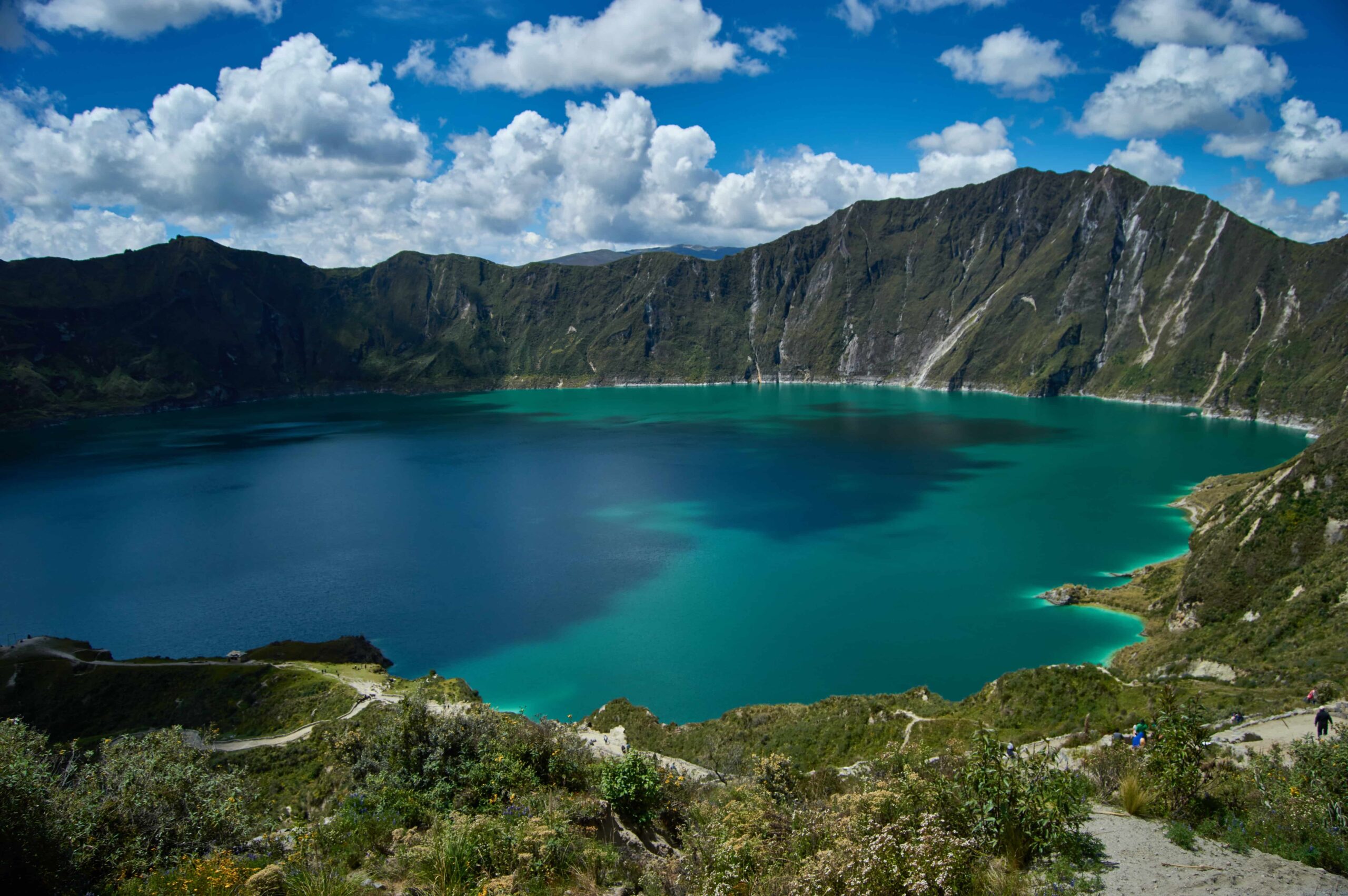
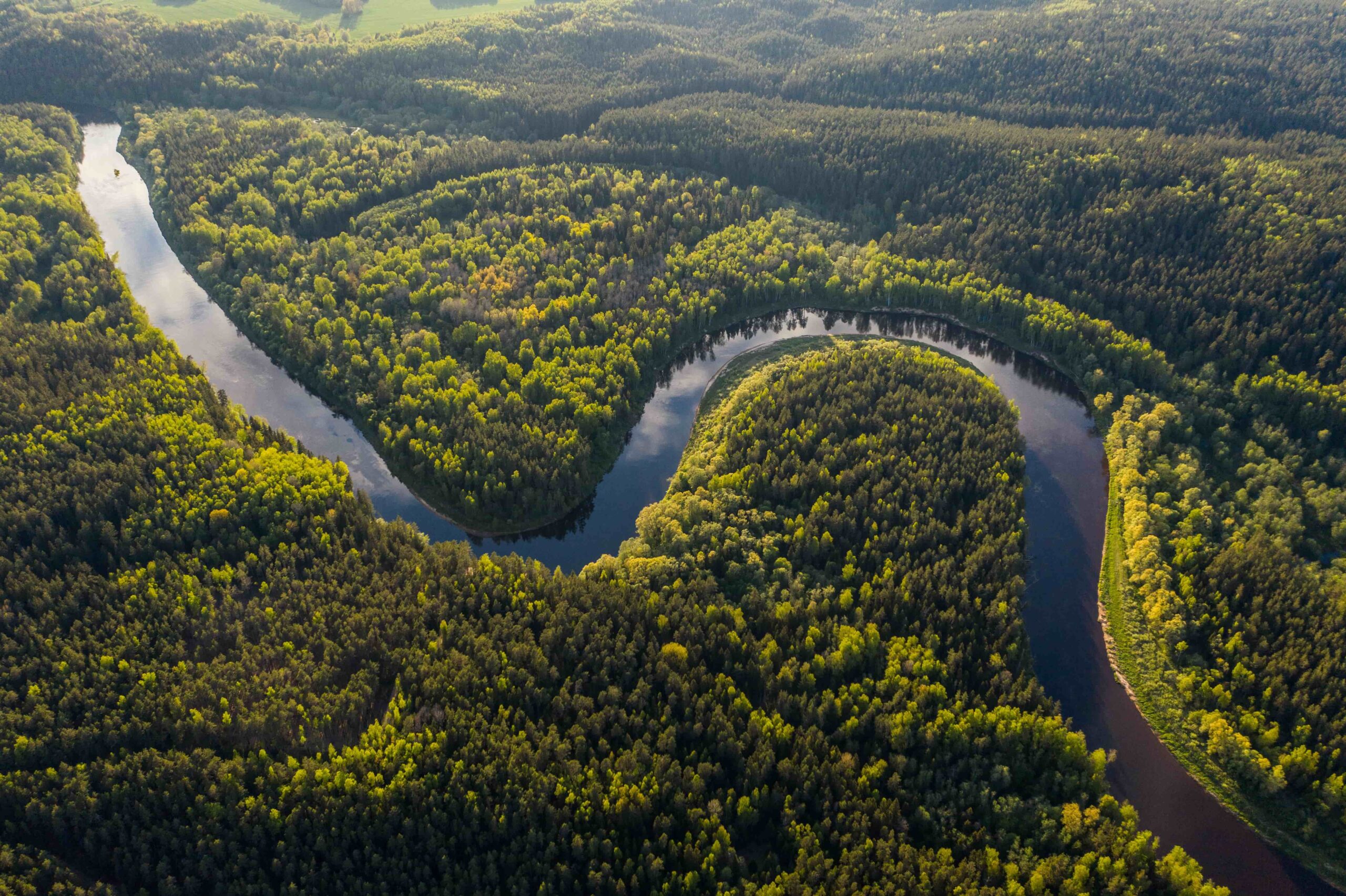
The Amazon Rainforest
Ecuador is sometimes ignored as a fantastic destination for seeing the richness of the Amazon Rainforest. The Cuyabeno Wildlife Reserve is one of the greatest sites in Ecuador to see the Amazon. You could visit other national parks, but this one is recognized for its biodiversity and indigenous cultures.
Cuenca
Cuenca is a World Heritage City that was founded thousands of years ago. It is located at the confluence of five rivers and provides tourists with a beautiful specimen of colonial Spanish architecture. It features a vast ancient town with cobblestone streets that is quite clean and attractive.
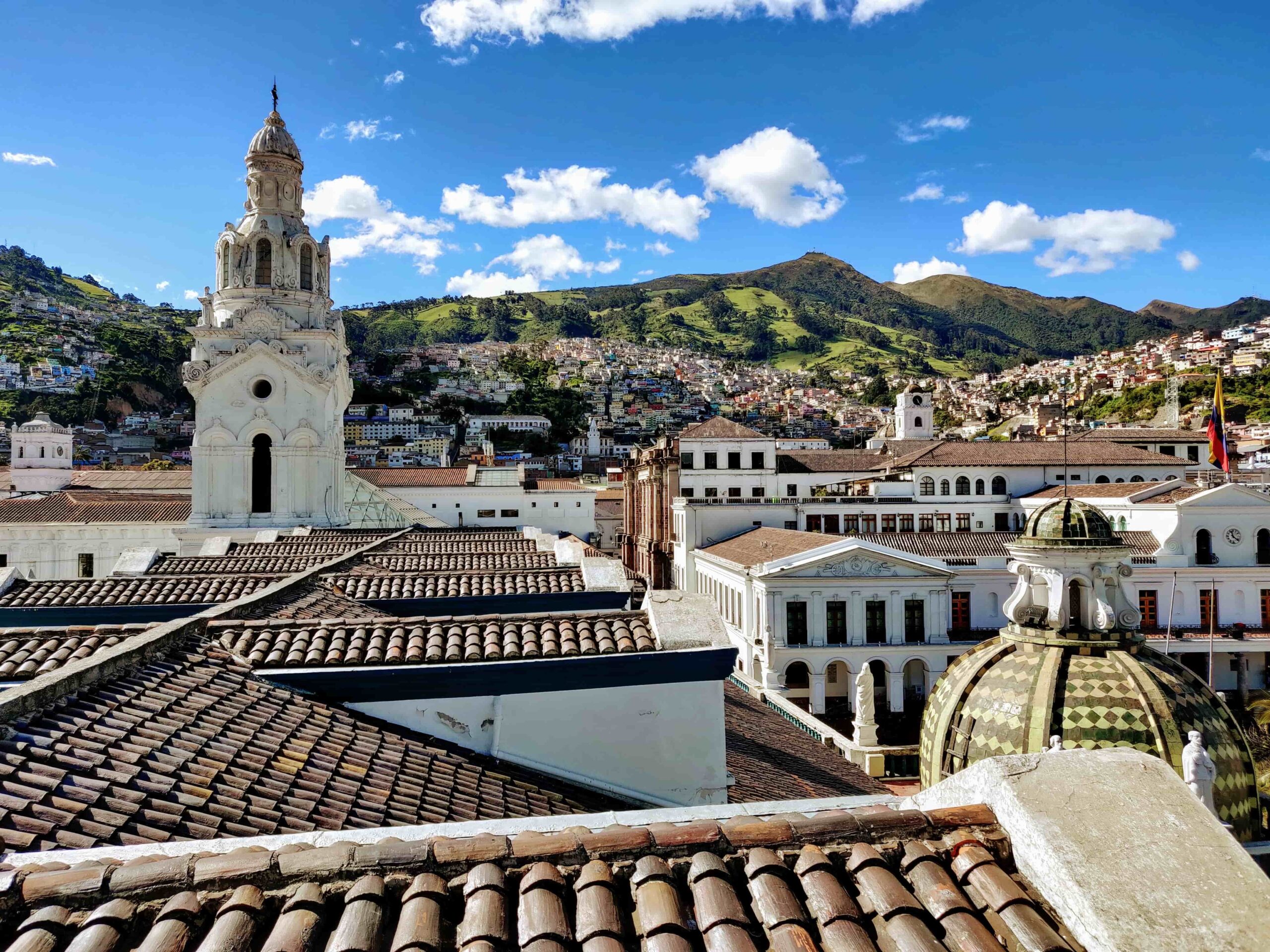
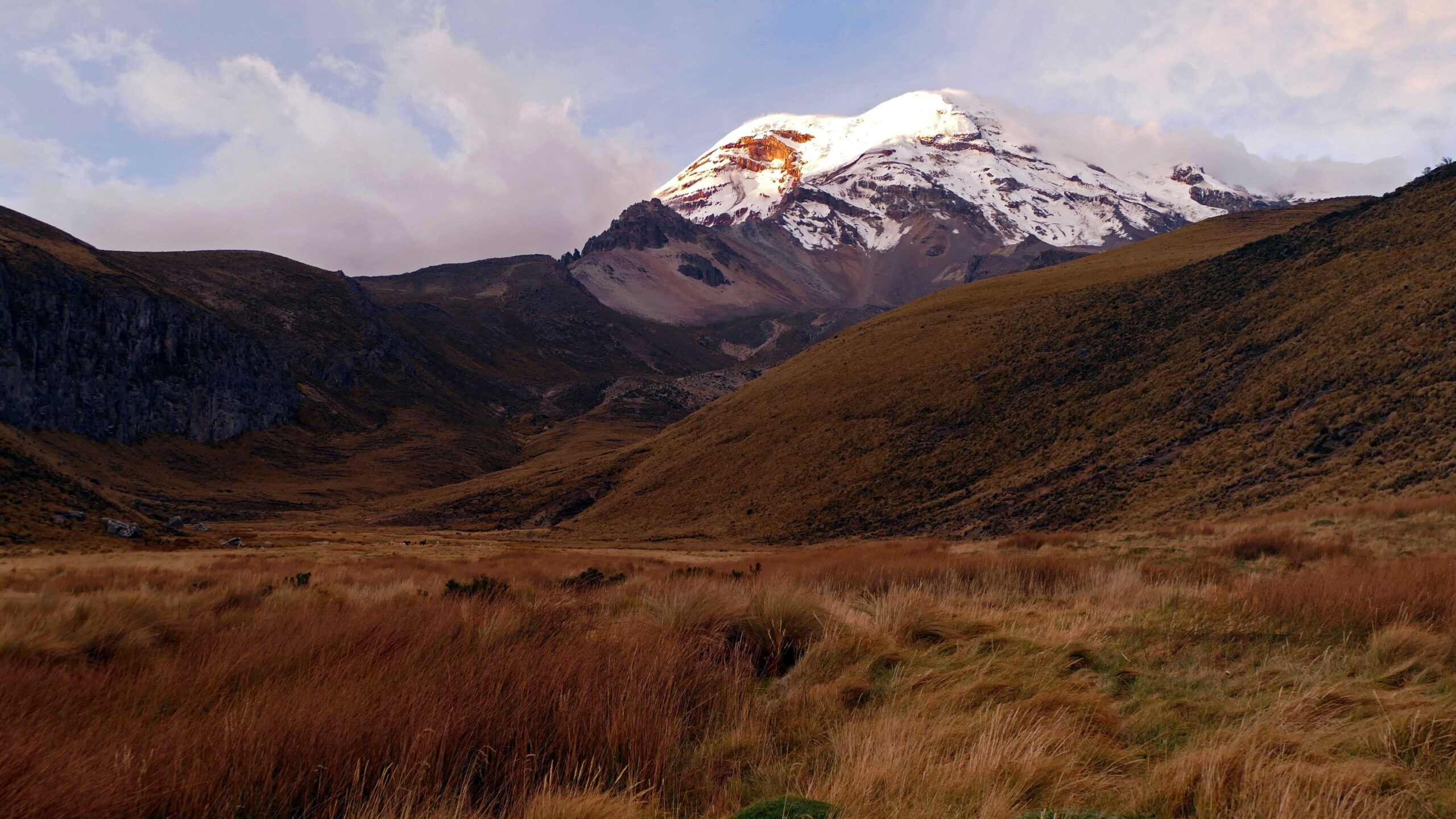
Chimborazo
Chimborazo is a dormant stratovolcano in the Andes’ Cordillera Occidental range and is Ecuador’s tallest mountain, with a peak elevation of 6,263 meters. Its most recent known eruption is thought to have happened about 550 A.D. Chimborazo’s top is the furthest point on the Earth’s surface from the planet’s center, but, is not higher than Mount Everest since elevation is measured from sea level. This is a famed hiking site, but it required high level of skill, especially since it is always on black ice, which needs high level equipment.
7-day Itinerary in Ecuador
Day 1
Arrive at Quito!
Bienvenida!
You should be arriving through Quito Airport, and once you’re there, either take your pre-booked transport, or get an authorized taxi. Sometimes your hotel can arrange a transport for you, so why not ask.
You will want to either stay around La Floresta, or the Historical Center where most of what you will want to see is around you. The majority of the attractions are concentrated around Plaza Mayor, including museums, right at the city center.
Depending on when you arrive, you might want to take a stroll around to get to know your surroundings and get acquainted with the city. Walk through the main square and neighboring regions. We highly advise you against walking at night. End the day, and get ready for tomorrow.


- Backpacker:
- Budget:
- Mid-range:
- Luxury:
When it becomes dark, a foreign city may be twice as dangerous - especially if you don't understand the language and are unfamiliar with the area. There is little reason to be alarmed about walking alone in the country, but there is some crime recorded in Quito to warrant a bit of worry. You can walk safely, but avoid walking at night and be alert in crowded areas or unlit alleys or streets. You can always take taxis, if you don't feel comfortable. Be wary of petty crime by taking precautions mentioned in the safety section above.
Day 2
Exploring Quito
Quito, Ecuador’s capital, was constructed in the 16th century on the ruins of an Inca city and is located at an elevation of 2,850 meters. Despite the 1917 earthquake, the city’s historic center remains the finest preserved and least changed in Latin America.
Right after breakfast, go on a free walking tour of the city. A guide, who are usually students, are enthusiastic and well educated about their city and its history. This helps you as a tourist in Ecuador to learn more about the place. Keep in mind to tip them for their service.
After your walking tour, stroll around the modern district of La Mariscal in the afternoon, then have lunch at one of the many popular restaurants, like Miskay, to enjoy authentic Ecuadorian cuisine. You can use ridesharing apps like Uber to get around instead of walking.


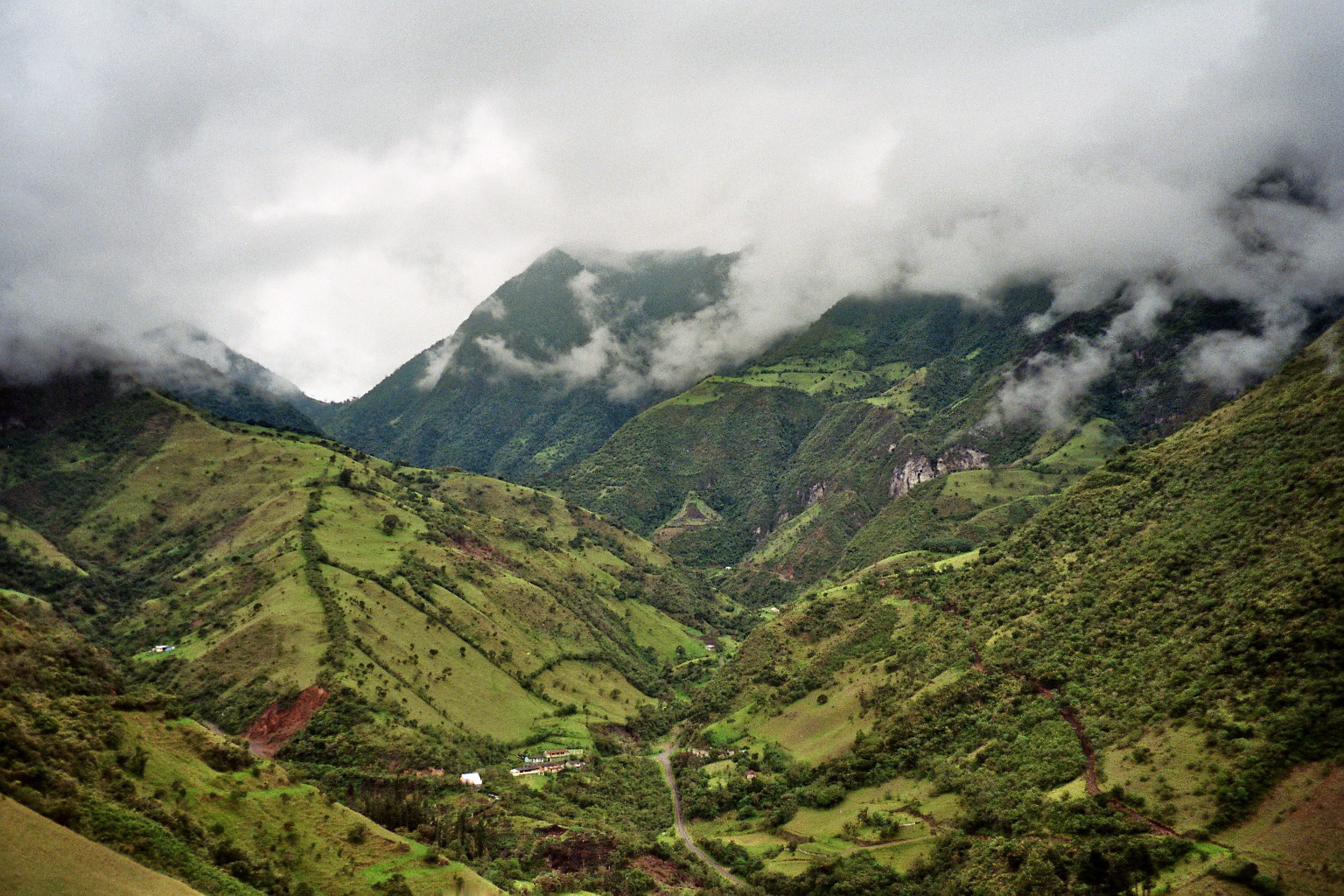

Day 3
Day trip to Mindo
Mindo, a little town three hours from Quito is a completely different vibe. Its gloomy woodland and lush tropical foliage make it a lovely, small, laid-back place to visit. It is home to an amazing diversity of birds as well as stunning waterfalls. Once you’re there you might even want to stay for a week in Mindo.
If you’re on a short trip, we recommend taking a tour to Mindo which you can book online or with local travel agents. Make sure you have the waterfalls sanctuary included. If you like birds, you can even get a specialist guide. If none of that suits you, you can visit local farms where you will also have the chance to see birds, but also layback.
Day 4
Head to Cotopaxi
Cotopaxi is the most famed volcano not just for its beauty, but also for its history and volcanic activity. You can go for the trek on a one day trip from Quito, but you will have to wake up early as tours leave around 6 am. However, you can also stay for the night at one of many beautiful spots in the region. Many accommodation’s are located in out of this world spots surrounded by the beautiful views.
Once you arrive, take a short stroll to waterfalls, and if you’re staying for the night, then prepare yourself for your hike tomorrow.
If you don’t want to stay in the Cotopaxi, you can take a day trip from Quito and then take a bus from Quito to Baños the next day, which is about a 4-hour journey.


- Backpacker:
- Budget:
- Mid-range:
- Luxury:
When it becomes dark, a foreign city may be twice as dangerous - especially if you don't understand the language and are unfamiliar with the area. There is little reason to be alarmed about walking alone in Cotopaxi. You can walk safely, but avoid walking at night and be alert and take all the precautions while hiking, preferably with a guide.
From Cotopaxi to Baños
The bus fare to Baños varies depending on the number of passengers, starting at $5 USD per person.



Day 5
Cotopaxi Hike
Today, right after a hearty breakfast, you will trek Cotopaxi on day 5 of your Ecuador itinerary. If you’ve arranged a tour, the driver will be waiting for you. If you don’t get altitude sickness, this is a great trek. No matter how well-trained and athletic you are, if your body does not like altitude, it will tell you, and you must listen.
You will reach a parking area a few kilometers past the park’s entrance. The hike will thereafter be led by an experienced guide. The hike is steep and sandy, making it more difficult because your foot sinks into the sand. When it’s windy, things grow much more challenging, but they’re still feasible.
It’s only a short hike up to the base at 4000 meters. Then you may decide whether you want to continue walking, which would be another 30 to 45 minutes of strenuous climbing in a higher altitude and potentially snow up to the glacier’s commencement. You can also stay at a restaurant and stay warm and cozy with other hikers. If you choose to reach the top, you will need to plan ahead, but also get a guide, as you will reach the base by afternoon, and trek around midnight to reach the summit by day break.
Day 6
Off to Baños
Once you arrive to Baños you will know why its so popular and why its on this Cruisit Ecuadorian itinerary. This adorable tiny village with beautiful and modest cafés and eateries is a nice stop. Situated in a valley surrounded by beautiful mountains with tons of waterfalls. Baños is also well-known for its hot springs, and the best hotels offer them on-site for visitors’ enjoyment.
You can rent a bike and take a waterfalls tour throughout the day. You don’t really need a guide with easy and accessible routes to stunning paths to various waterfalls. You can always ask your hotel and bike shops for the routes. Pailon del Diablo is a must see, but make sure you get there in time since they shut at 5 pm.
La Casa del Arbol is also a must see attraction. A towering swing on the lip of a hill just above Baños, facing the spectacular volcano Tungurahua. You will be tossed up in the air, and you might get freaked out though! The admission fee is $2 and you can get there by car or bus or a 4 hour hike. If you’re staying for a bit longer take the Amazon rainforest tour from Puyo.


- Backpacker:
- Budget:
- Mid-range:
- Luxury: Luna Volcan
When it becomes dark, a foreign city may be twice as dangerous - especially if you don't understand the language and are unfamiliar with the area. There is little reason to be alarmed about walking alone in the country, but there is some crime recorded in Baños to warrant a bit of worry. You can walk safely, but avoid walking at night and be alert in crowded areas or unlit alleys or streets. You can always take taxis, if you don't feel comfortable. Be wary of petty crime by taking precautions mentioned in the safety section above.
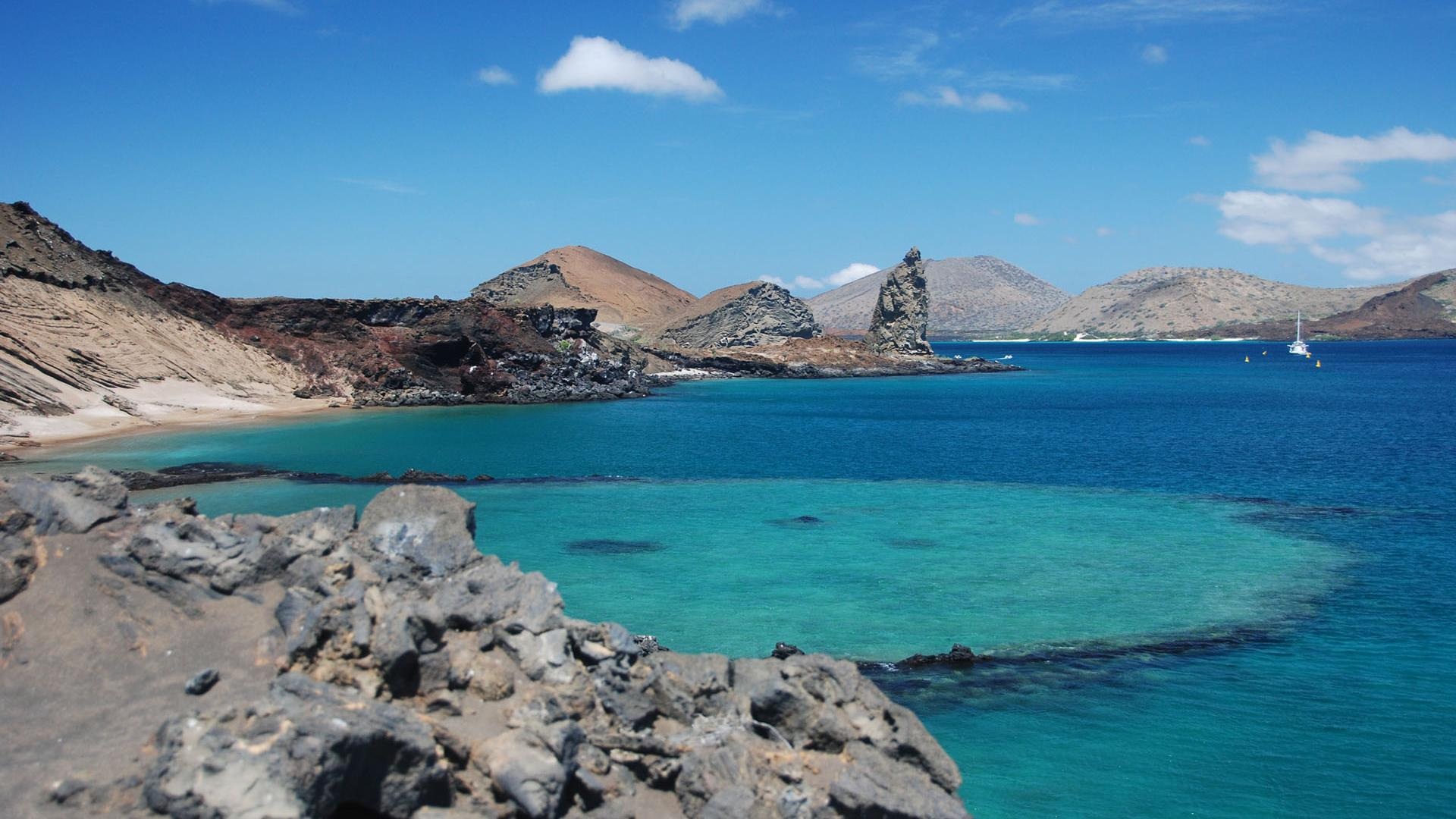


Extension Option
Galapagos
One of the most fascinating ecosystems on the planet, which is extremely fragile and in desperate need of sound conservation practices in order to be conserved. It truly is a paradise for wildlife lovers and conservationists. You may either join a cruise, which ranges in price from $800 USD for a three-day cruise to an unbelievable $8000 USD. There are two admission fees totaling $120 USD, with the proceeds going to conservation. Remember to factor it into your budget.
You must book all of your lodgings and departing flights before arriving on the island. Furthermore, you must have travel insurance and present proof of it before checking in. Flights from Quito or Guayaquil to Santa Cruz or San Cristobal are available. Santa Cruz is the main island from which the bulk of cruises departs, including the famed Bartolome Island. This is an unmissable activity in Ecuador.
Playa Tortuga Bay in Santa Cruz is a dreamlike environment that is home to hundreds of marine iguanas, red crabs (Sally Lightfoot Crab), and other bird species. It’s a wonderful tranquil stroll to get there. Bring cash with you because the few cash machines sometimes break down and take forever to repair; this may not be an issue in Santa Cruz because there are more alternatives, but it is in San Cristobal.

Day 7 or more
Departure Day
If you arrive in Quito and have an early flight the next morning, stay in a hotel near the airport. The city center is approximately an hour from the airport.
Say your last goodbye’s and head to the Airport!
The Most Popular Food in Ecuador
Ecuadorian cuisine is diverse, varying according to elevation and farming resources. Ecuadorian cuisine is a fusion of Spanish, Andean, and Amazonian cuisines, as well as, to a lesser extent, Italian, Lebanese, African, and Chinese cuisines. Beef, poultry, and seafood, particularly ceviche, are popular in coastal locations and are generally served alongside rice joined by lentils, pasta, or plantain. Pork, chicken, beef, and cuy (guinea pig) are popular in the hilly regions and are frequently eaten with rice, corn, or potatoes.

Cuy Asado
If you visit Ecuador, you must try roasted guinea pigs, known as conejillo de indias or cobaya, is a popular cuisine in Andean nations. Ecuadorian patrimonial cuisine includes meals like roasted cuy and cuy stew. Cuy is served with potatoes and/or corn, salsa, and chile. Many folks may be hesitant to try this meal. However, it’s a superb classic meal that never fails to wow. Try roasted cuy, whether in a market or a restaurant! If you find yourself in Ecuador, we highly suggest this trip.
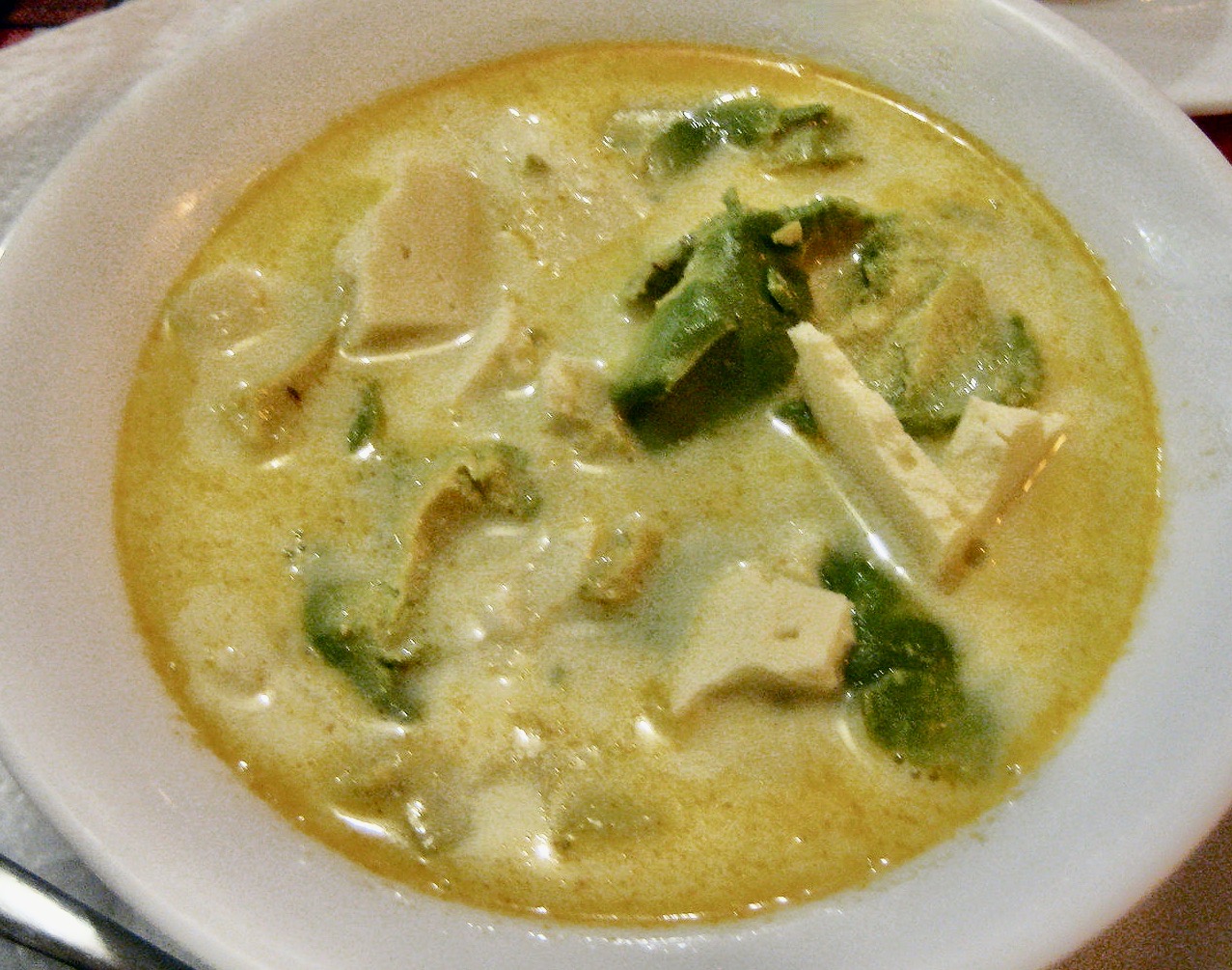
Locro de Papa
Locro de papa is a popular Ecuadorian soup prepared with potatoes and cheese. It is typically topped with avocado and served with a fiery aji sauce. The recipe is easy and filling, and it is popular throughout much of Ecuador.

Ceviche
Ceviche, or chilled seafood cocktail, is a popular cuisine near the coast. The Ecuadorian version is frequently served with “chifles,” or thinly fried plantains, and popcorn.

Encebollado
This substantial fish soup is popular along the coast and is prepared with yucca. It has a tomato base with cooked yucca and seasoned veggies. Some restaurants add “chifles” for crunch.
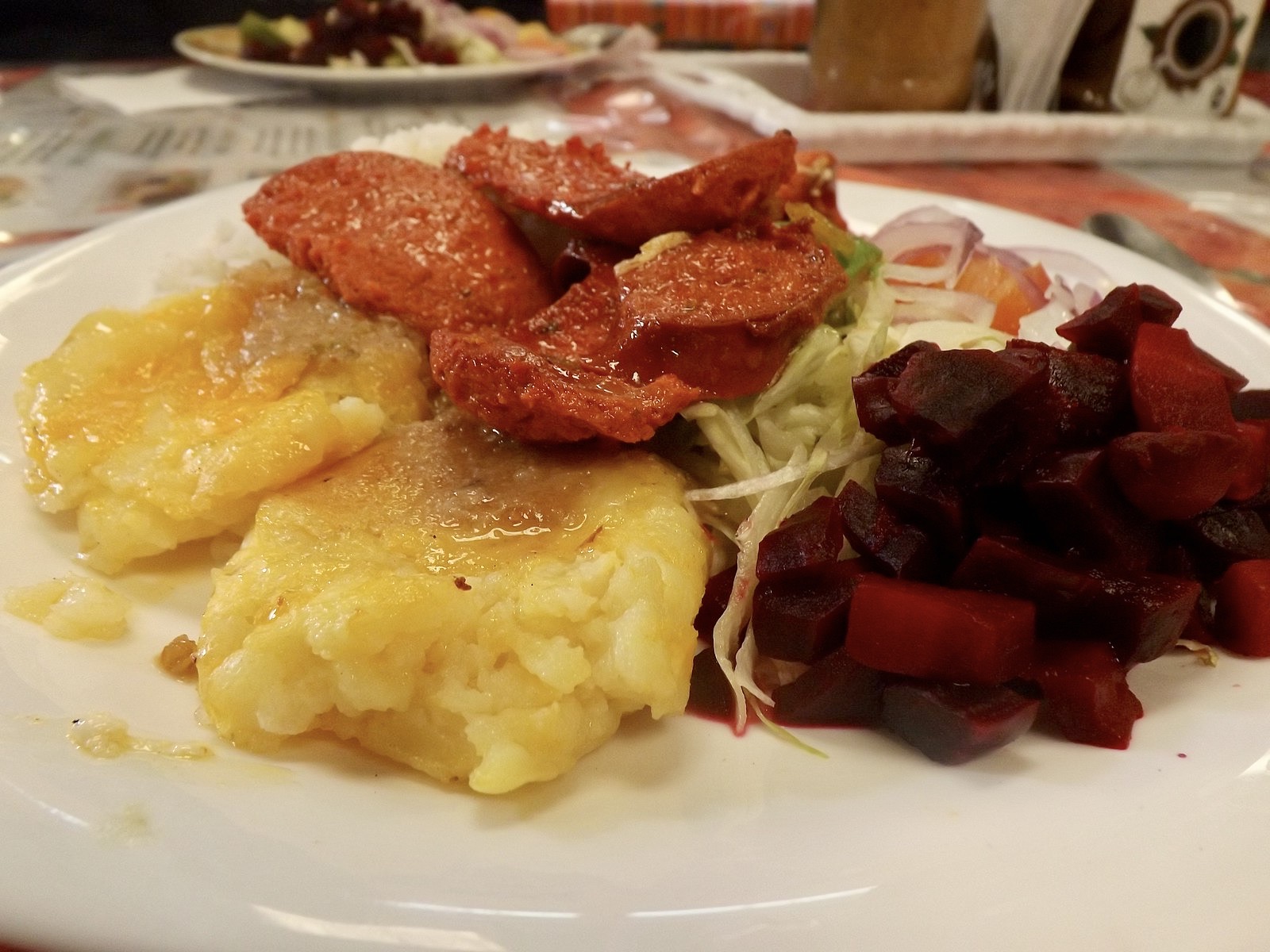
Llapingachos
Llapingachos are fried tortillas made from boiled potatoes and stuffed with cheese that are typically served with chorizo, fried egg, salad, and avocado. This is one of the most popular dishes among international travelers, so try it while you’re there.
What's the Travel Budget for Ecuador?
Flights
- Flights start at roughly $170 from nearby countries. Tickets however on average cost around $550 and can cost way more depending on which class and from which country you depart from.
Accommodation
- Nomad Backpacking style travelers can expect to spend around $150 for a week
- Budget travelers can expect to spend around $230 for a week
- Mid-range travelers can expect to spend around $370 for a week
- Luxury travelers can expect to spend around $750 for a week
Food Budget (Three meals and drinks)
- Nomad Backpacking style travelers can expect to spend around $8 per person per day
- Budget travelers can expect to pay around $17 per person per day
- Mid-range travelers on average would cost $20 to $30 per person per day
- Luxury travelers can expect to pay around $35 to $55 per person per day
Overall Budget Styles (Not including Flights, Tours, Transportation, or Car Rental)
- Nomad Backpacking style travelers can expect to spend roughly $250 for a week
- Budget travelers can expect to spend close to $400 for one person for a week
- Mid-range travelers can expect to spend approximately $670 for one person for a week
- Luxury travelers can expect to spend around $1,700 for one person for a week
Flights
- Flights start at roughly $170 from nearby countries. Tickets however on average cost around $550 and can cost way more depending on which class and from which country you depart from.
Accommodation
- Nomad Backpacking style travelers can expect to spend around $150 for a week
- Budget travelers can expect to spend around $230 for a week
- Mid-range travelers can expect to spend around $370 for a week
- Luxury travelers can expect to spend around $750 for a week
Food Budget (Three meals and drinks)
- Nomad Backpacking style travelers can expect to spend around $8 per person per day
- Budget travelers can expect to pay around $17 per person per day
- Mid-range travelers on average would cost $20 to $30 per person per day
- Luxury travelers can expect to pay around $35 to $55 per person per day
Overall Budget Styles (Not including Flights, Tours, Transportation, or Car Rental)
- Nomad Backpacking style travelers can expect to spend roughly $250 for a week
- Budget travelers can expect to spend close to $400 for one person for a week
- Mid-range travelers can expect to spend approximately $670 for one person for a week
- Luxury travelers can expect to spend around $1,700 for one person for a week
Flights
- Flights start at roughly $170 from nearby countries. Tickets however on average cost around $550 and can cost way more depending on which class and from which country you depart from.
Accommodation
- Nomad Backpacking style travelers can expect to spend around $150 for a week
- Budget travelers can expect to spend around $230 for a week
- Mid-range travelers can expect to spend around $370 for a week
- Luxury travelers can expect to spend around $750 for a week
Food Budget (Three meals and drinks)
- Nomad Backpacking style travelers can expect to spend around $8 per person per day
- Budget travelers can expect to pay around $17 per person per day
- Mid-range travelers on average would cost $20 to $30 per person per day
- Luxury travelers can expect to pay around $35 to $55 per person per day
Overall Budget Styles (Not including Flights, Tours, Transportation, or Car Rental)
- Nomad Backpacking style travelers can expect to spend roughly $250 for a week
- Budget travelers can expect to spend close to $400 for one person for a week
- Mid-range travelers can expect to spend approximately $670 for one person for a week
- Luxury travelers can expect to spend around $1,700 for one person for a week
Flights
- Flights start at roughly $170 from nearby countries. Tickets however on average cost around $550 and can cost way more depending on which class and from which country you depart from.
Accommodation
- Nomad Backpacking style travelers can expect to spend around $150 for a week
- Budget travelers can expect to spend around $230 for a week
- Mid-range travelers can expect to spend around $370 for a week
- Luxury travelers can expect to spend around $750 for a week
Food Budget (Three meals and drinks)
- Nomad Backpacking style travelers can expect to spend around $8 per person per day
- Budget travelers can expect to pay around $17 per person per day
- Mid-range travelers on average would cost $20 to $30 per person per day
- Luxury travelers can expect to pay around $35 to $55 per person per day
Overall Budget Styles (Not including Flights, Tours, Transportation, or Car Rental)
- Nomad Backpacking style travelers can expect to spend roughly $250 for a week
- Budget travelers can expect to spend close to $400 for one person for a week
- Mid-range travelers can expect to spend approximately $670 for one person for a week
- Luxury travelers can expect to spend around $1,700 for one person for a week
If you want to know what to pack, read this list below:
- This is a casual dry tropical country with warm weather that tends to get moderate rain, dress accordingly
- Raincoat or Light Waterproof Jacket
- Hiking Boots or Sturdy Sneakers (Shoes You Don’t Mind Getting Wet)
- Sunscreen
- Insect Protection – Repellent and Clothing
- Sunglasses and Sun Hat
- Water Shoes
- Beach Towels/Sarong
- Dry Bag
- Money Belt or Cross Bag
- Portable Medical Kit
- Flashlight or Headlamp
- Copies of your passport.
- Get all the needed vaccinations before traveling
- A power bank is a must in any travel.
- Always have some cash with you just in case there are no ATMs and if you are dealing with a business that solely accepts cash
- Get yourself an adapter for your gadgets
- 1 toothbrush
- 1 tube of toothpaste
- 1 razor
- 1 package of dental floss
- 1 small bottle of shampoo
- 1 small bottle of shower gel
- 1 towel
- Deodorant
- Band-Aids
- Hydrocortisone cream
- Antibacterial cream
- Earplugs
- Tylenol
- Hand sanitizer (germs = sick = bad holiday)
- A key or combination lock
- Zip-lock bags
- Plastic bags (great for laundry)
- Universal charger/adaptor
- LifeStraw (A water bottle with a purifier)
- 1 dry shampoo spray & talc powder
- 1 hairbrush
- Makeup you use
- Hairbands & hair clips
- Feminine hygiene products
Clothing For Boys
- 1 pair of jeans or khaki pants
- 1 pair of shorts
- 1 bathing suit
- 5 T-shirts
- 1 long-sleeved T-shirt
- 1 pair of flip-flops
- 1 pair of sneakers
- 6 pairs of socks
- 5 pairs of boxer shorts
Clothing For Girls
- 1 swimsuit
- 1 sarong
- 1 pair of stretchy jeans
- 1 pair of leggings
- 2-3 long-sleeve tops
- 2-3 T-shirts
- 3-4 spaghetti tops
- 1 light cardigan
Want to plan your own trip, here are some of the best resources that can help you
- Skyscanner – They search small websites and budget airlines that larger search sites tend to miss. They are hands down the number one place to start.
- Momondo – This is another favorite flight search engine because they search such a wide variety of sites and airlines. Always check here too.
- Booking.com – The best all-around booking site that constantly provides the most affordable and lowest rates. They have the widest selection of budget accommodation.
- Couchsurfing – This website allows you to stay on people’s couches or spare rooms for free. It’s a great way to save money while meeting locals who can tell you the ins and outs of their city. The site also lists events you can attend to meet people (even if you’re not staying with someone).
- Intrepid Travel – If you want to do group tours, go with Intrepid. They offer good small group tours that use local operators and leave a small environmental footprint.
- Grassroots Volunteering – For volunteering, Grassroots Volunteering compiles a list of good local volunteer organizations that keep the money within the community.
- Get Your Guide – Get Your Guide is a huge online marketplace for tours and excursions. They have tons of tour options available in cities all around the world, including everything from cooking classes, walking tours, street art lessons, and more! It has the world’s largest collection of things to do with more than 30,000 activities in 7500 destinations.
- SafetyWing – Safety Wing offers convenient and affordable plans tailored to digital nomads and long-term travelers. They have cheap monthly plans, great customer service, and an easy-to-use claims process that makes it perfect for those on the road.
- Trip Advisor: Check the reviews and then book your accommodation. TripAdvisor is where you go when you want to compare prices with multiple accommodation providers.
- VRBO: is the main search engine to use when you are looking for a home or apartment rental. It can sometimes be cheaper than hotels and it is the best way to stay in areas that offer a more local feel.
- Hostelworld: With one of the largest databases of hostels in the world, Hostelworld is the go-to site when you are looking for budget accommodation.
- Rome 2 Rio: If you want to see how to get somewhere by plane, train, bus, ferry, or car Rome2Rio lays it all out for you as well as related costs.
- World Nomads Insurance: When traveling you should always have travel insurance. We have found the best bang for your buck is by far World Nomads.
Final Thoughts on Ecuador
With its diverse colonial buildings and heritage, breathtaking and unique landmarks, unbelievable warmness, exciting tunes and dances, and vivid picture-perfect surroundings of forests, pristine beaches, and wildlife, Ecuador has a refined and rich heritage that can be seen across the country dating back to at least the 3000 BC. A fantastic option for anyone seeking one of the best Caribbean holiday locations. Ecuador is breathtakingly beautiful, with magnificent national treasures, flora and one of the most diverse wildlife in the world, and spectacular scenery. Would you visit Ecuador?
Have you ever been to the Ecuador? Please share your thoughts and experiences in the comments area below.